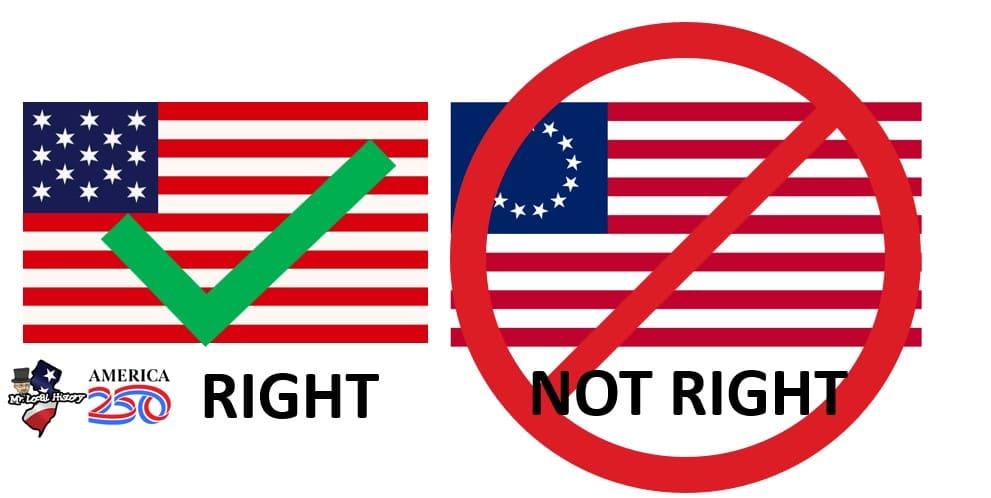
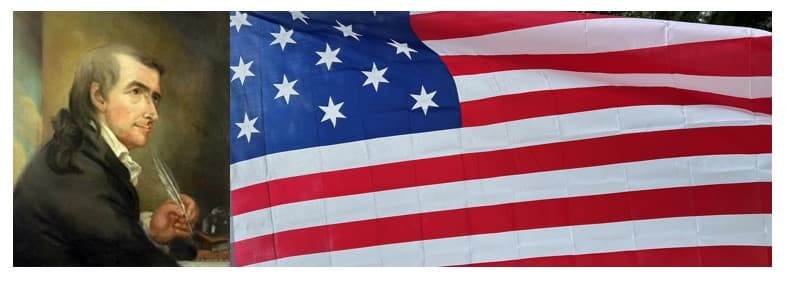
Meet Francis Hopkinson – New Jersey signer #Jersey5 signer of the Declaration of Independence, who also designed, presented, and received the Continental Congress’s Approval as America’s First official flag on June 14, 1777, in Philadelphia.
The Francis Hopkinson Flag – First Official Flag – Made in New Jersey

“Resolved, That the flag of the United States be thirteen stripes, alternate red and white; that the union be thirteen stars, white in a blue field, representing a new constellation.”
— Continental Congress, June 14, 1777
Like me, many of us in Somerset County, New Jersey, we drive back and forth on Route 22 never thinking that just off the highway on the hillside off Vosseller Avenue in Bridgewater, New Jersey is a small 16 acre property that has the distinct honor of being the first place to fly the first official flag of our new American country on June 14, 1777.
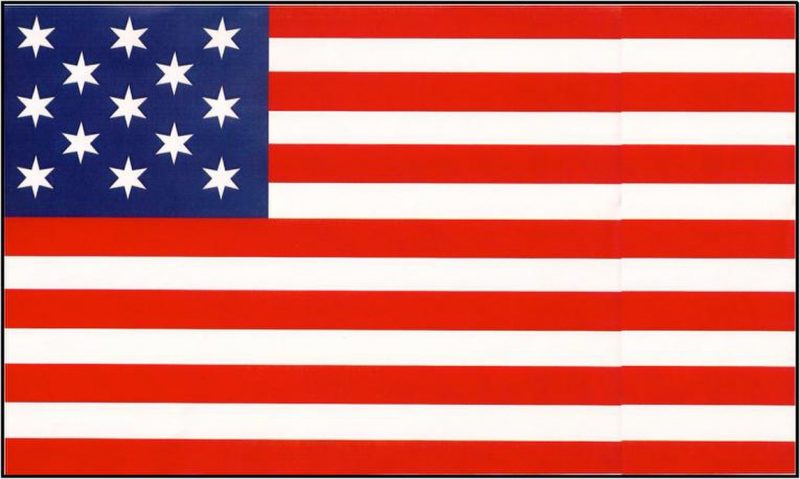
The area is called “Middlebrook”; it’s a tiny section of land recognized as part of Bridgewater, New Jersey, just south of Martinsville in Somerset County, New Jersey. It’s just north of Bound Brook. It was on a warm “almost summer day” on June 14, 1777, that Washington’s Continental Army hoisted America’s first official flag after the Continental Congress approved the flag on June 14, 1777, known to Americans now as Flag Day, the day we all honor the American flag.
However, while everyone thought Betsy Ross designed the first American flag, many historians have come to the conclusion that it wasn’t Ross who made the first official American flag, but Francis Hopkinson, a southern New Jersey native, signer of the Declaration of Independence, and the one who designed the first official American flag.
Those Jersey Signers Were Replacement Delegates to the Convention
Just before the signing of the Declaration of Independence in Philadelphia, many people may not remember that all the colonies were under Royal rule. At the time, Royal Governor Franklin was living in Perth Amboy just weeks before the signing and was arrested by colonists who wanted separation. These independence-minded folks also disbanded any New Jersey signer who was going to reject the declaration. So all five of the singers were newly selected to replace the previous New Jersey delegation. Francis Hopkinson was one of those chosen to represent and sign the Declaration of Independence.
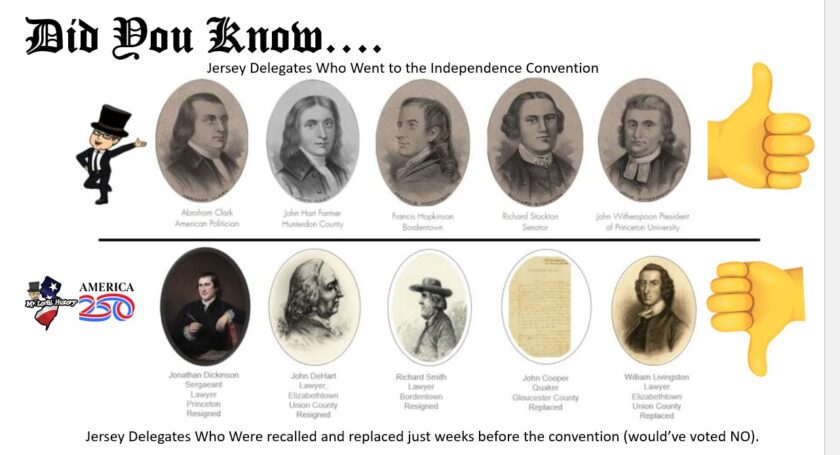
There is some truth to the idea that the signers of the Declaration of Independence may have followed a methodical order to avoid smudging each other’s signatures, though this is based more on tradition and inference than on documented instruction. The official engrossed (handwritten) copy of the Declaration was signed primarily on August 2, 1776, not on July 4, and the signatures were generally grouped by state delegation rather than placed randomly.
The signers’ order on the Declaration was not alphabetical, but rather followed a general geographical progression by state, beginning with the northernmost states and moving southward in the following order: New Hampshire, Massachusetts, Rhode Island, Connecticut, New York, New Jersey, Pennsylvania, Delaware, Maryland, Virginia, North Carolina, South Carolina, and Georgia, with John Hancock signing first at the top as President of the Continental Congress.
Is there More then One Declaration of Independence?
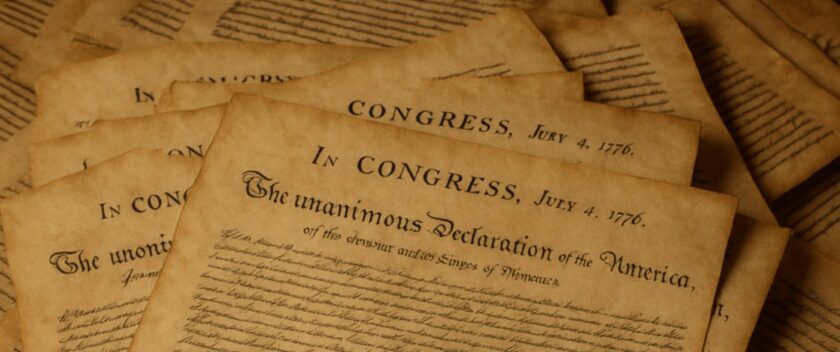
There is only one original, signed, engrossed parchment copy of the Declaration of Independence. This is the formal handwritten version, signed primarily on August 2, 1776, by 56 delegates and now preserved at the National Archives in Washington, D.C.
However, multiple versions of the Declaration were produced in 1776 for distribution and dissemination. On the night of July 4, 1776, printer John Dunlap created about 200 copies known as the “Dunlap broadsides.” These were the first printed versions, used to disseminate news of independence to the colonies, the Continental Army, and newspapers. Only about 26 Dunlap broadsides are known to survive today. Other early printed versions were created in the months that followed, such as the Goddard broadside of January 1777, which was the first to list all the signers’ names. These printed editions are historically significant, but are not considered original in the sense of being the signed manuscript.
Who’s Francis Hopkinson?
Francis Hopkinson of Bordentown, New Jersey, a naval flag designer, and a signer of the Declaration of Independence, designed his 1777 American flag while he was the Chairman of the Continental Navy Board’s Middle Department, sometime between his appointment to that position in November 1776 and the time that the flag resolution was adopted in June 1777. The Navy Board was under the jurisdiction of the Continental Marine Committee.
Not only did Hopkinson claim to have designed the U.S. flag, but he also claimed to have designed a flag for the U.S. Navy. Hopkinson was the only person to have made such a claim during his own life when he sent a letter and several bills to Congress for his work. These claims are documented in the Journals of the Continental Congress and George Hasting’s biography of Hopkinson.
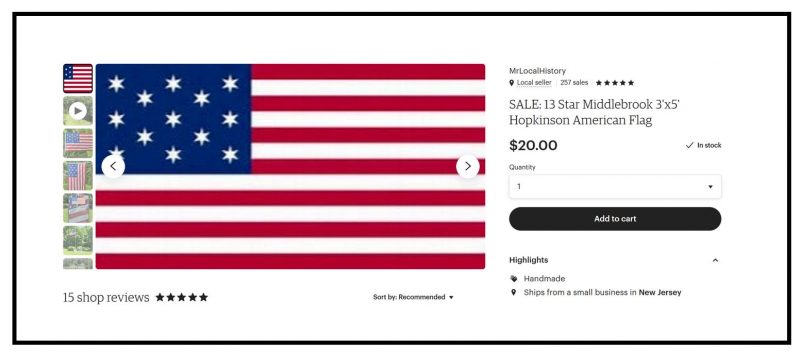
Francis Hopkinson (1737-1791) resided at 101 Farnsworth Street in Bordentown, Burlington County, New Jersey, United States. His home was built in 1750. He lived in this home with his wife Ann Borden (1747-1827) from 1774 until Hopkinson’s death in 1791. Ann Borden was the granddaughter of Joseph Borden, the founder of Bordentown, New Jersey. The house was designated a National Historic Landmark in 1971. Various businesses now occupy his home in Bordentown, but it remains partially open to the public. Inside are wall displays in tribute to the signer. Hopkinson, who died in 1791 at the age of 53, is buried in Christ Church Cemetery in Philadelphia.
So now you know. If you’re from New Jersey, the Hopkinson flag is for you!

